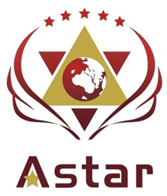假造新冠检测被重罚 他MIT毕业 曾在中国学少林功夫
世界新闻网
4/24/2022

加州新冠肺炎检测公司「同日科技」(Sameday Technologies)在全国经营「同日健康」(Sameday Health)检验中心,该公司谎称新冠肺炎检测结果能够在24小时内出炉,实际上则提供顾客伪造的检测结果。「同日科技」已同意支付2200 万元以上罚款。
部分案件在顾客的采检样本送至实验室之前,就将伪造的检测结果交给顾客;某些样本甚至完全未检测。伪造检测一人收取195元费用。
根据洛杉矶检察官办公室的刑事告诉状内容,该公司清楚他们无法达到对外宣称的服务,「同日科技」合作的实验室告知该公司检测结果无法在这么短的时间内出炉。
市检察官表示大约500人的检测为假数据或伪造结果,该公司窜改旧有检测结果的PDF档案交给顾客。
告诉状另外指出「同日科技」首席执行官惠顿巴赫(Felix Huettenbach)要求投保客户在检测过程接受医师检查。用现金支付的顾客并未被要求医师检查,也不被允许看医师。

当局指控知名医师托尔(Jeff Toll)为该公司顾客检查,托尔办公室向保险公司收取一次400元的费用。
托尔被指控抽取检查获取的部分利润给「同日科技」,作为「回扣」;诉状指出,这些检查「无医学必要」。
托尔必须支付280万元赔偿金,以及115万元做为民事惩处,与「同日科技」的罚款分开。他在脸书否认有任何不当行为,表示和解不等于承认有罪,「我非常认真看待我的职业道德,并且对疫情期间我们照顾了多少的患者极为自豪。」托尔声明他与「同日科技」是分开的独立实体,他只有对「实际上提供」的服务收取费用。
达成和解后,「同日科技」在洛杉矶时报(The Los Angeles Times)的声明表示:「早期,服务需求急遽增加,而供应短缺,我们未能达到顾客应得的卓越标准,我们已经修正2020年出现的问题,大量投资系统与遵守规定,以确保达到顾客的期待。」
根据「同日科技」首席执行官惠顿巴赫在领英(linkedin)上的自述,他毕业于麻省理工学院(MIT),十岁时曾在中国上海一处寺庙学习少林寺功夫。

南加华裔按摩师涉医保欺诈 获刑70个月退款130万元
世界新闻网
4/22/2022

据联邦检察官办公室消息,一名在橙县行医的华裔脊稚按摩师(Chiropractor),因涉嫌欺诈医疗保健费220 万美元,向保险公司发送虚假账单,被判刑70个月,勒令退款130万元。
在橙县丹娜点(Dana Point)地区行医的 57 岁女脊椎按摩师潘苏姗(Susan H. Poon,译音),因为涉嫌欺诈医疗保健费,被联邦地方法院法官卡特 (David O. Carter)判刑入狱 70 个月,还下令要她退给受害者130 万美元。
在2021年6月的审讯中,潘苏姗被控的五项医疗保健欺诈罪名、三项与医疗保健事项有关的虚假陈述,以及一项严重的身份盗窃罪名成立。
根据联邦检察官的说法,从 2015 年 1 月至 2018 年 4 月潘苏姗参与了该项欺诈活动,她在 Rancho Santa Margarita设有一个办公室,她去当地的医疗保健展,领取联合包裹投递公司(United Parcel Service )和好市多商场(Costco)员工的个人身份证明,用来提交虚假处方和申请报销。
潘苏姗提交的假账单金额约为 220 万美元,她在2019 年 7 月已被吊销脊椎按摩师执照。

Department of Justice
U.S. Attorney’s Office
Central District of California
FOR IMMEDIATE RELEASE
Thursday, April 21, 2022
Former Chiropractor Sentenced to Nearly Six Years in Federal Prison for Fraudulently Submitting $2.2 Million in Billings to Health Insurers
SANTA ANA, California – A former Orange County chiropractor was sentenced today to 70 months in federal prison for stealing from health insurers by fraudulently causing the submission of $2.2 million in billings for chiropractic services never provided, medical diagnoses never given, office visits that never occurred, and medical devices that were falsely prescribed.
Susan H. Poon, 57, of Dana Point, was sentenced by United States District Judge David O. Carter, who ordered her to pay$1,379,622 in restitution to her victims.
At the conclusion of a five-day trial in June 2021, a federal jury found Poon guilty of five counts of health care fraud, three counts of making false statements relating to health care matters, and one count of aggravated identity theft.
From January 2015 to April 2018, Poon, whose office was in Rancho Santa Margarita, schemed to defraud health insurance companies by submitting false reimbursement claims for services that were never performed.
Poon also submitted fraudulent prescriptions containing medical diagnoses of individuals that she had never met, including toddlers and children, which led a medical device manufacturer to submit false claims for reimbursement to one health insurer.
The patients that Poon claimed to have met with and treated were dependents – such as the spouses and children – of Costco Wholesale Corp. and United Parcel Service Inc. employees. Poon unlawfully took and used the dependent’s personal identifying information (PII) in her reimbursement requests and prescriptions. Poon obtained the PII by attending health fairs at various UPS warehouses and Costco locations and soliciting such information from employees.
“[Poon’s] scheme consisted of interdependent moving parts,” prosecutors wrote in a sentencing memorandum. “She lied about visits with, diagnoses of, and treatments given to actual people and their children. She sent fraudulent Durable Medical Equipment (DME) prescriptions – predicated on visits with these patients that never happened – to a DME manufacturer. And she fabricated medical documentation containing the personal identifying information of these ‘ghost’ patients to mislead an auditor.”
In total, Poon billed and caused to be billed approximately $2.2 million through her scheme.
Poon’s chiropractic license was revoked in July 2019, according to the California Department of Consumer Affairs.
The following agencies investigated this matter: Amtrak – Office of the Inspector General, California Department of Insurance, U.S. Department of Labor – Employee Benefits Security Administration, U.S. Department of Labor Office of the Inspector General, the FBI, and Office of Personnel Management – Office of the Inspector General.
Assistant United States Attorneys Daniel S. Lim and Daniel H. Ahn of the Santa Ana Branch Office prosecuted this case.
Healthcare Certification and ESL Programs
芝租房诈骗频传 闯空屋扮房东收租金
3/31/2022
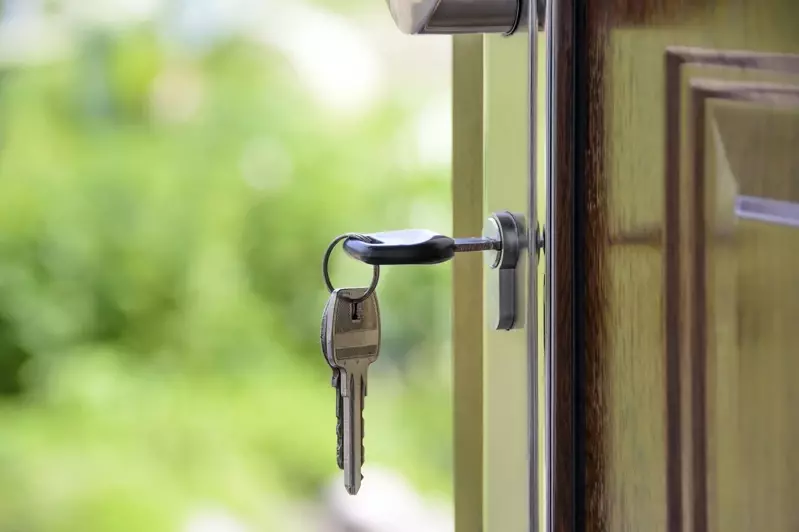
想在芝加哥地区租屋的房客要留意了,租屋专家指出,越来越多诈骗分子闯入包括法拍公寓或房子的空置房产,再假冒屋主在网络公开出租,等房客上钩且缴完押金、租金后一段时间,真正屋主现身举发,房客才知道遭到诈骗,不但租金拿不回来,同时也面临驱逐令。
一名管理芝市与郊区多栋房产的专业经理人怀特说,包括他的客户及房产律师在内,平均每周传出八到十次的类似诈骗案件,例如最近有一名房产东主正准备出租空置的单位,没想到该物业却早已被不法分子闯入,更换了门锁,而且有人住在里面了。
兰辛警察局(Lansing Police)的警官贝利(Scott Bailey)说,诈骗者主要针对市面上的法拍屋,这些房屋门口都挂上了钥匙箱,他们通常直接撬开锁箱,然后就把该单位上市出租。等有房客询问时,这些诈骗份子不会现身,一般只用电子邮件发给房客租约,然后将钥匙留在门口,新房客不疑有他就会将押金与租金寄给「假房东」,等搬进房子后,才发现根本是一场骗局。
还有另一个案例,是骗子与公寓居民接触,并表明身分自己为新管理公司代表,然后再哄骗租客把租金转到这些假管理公司帐户。
贾莫森(Jolondon Jamerson)说,他已经住在芝市查塔姆区(Chatham)一栋有38单元的大楼长达17年,去年秋天有一名男子拿着文档进入大楼,自称代表新的物业管理公司,他还向住户解释以后,须把租金改寄到新管理公司地址,这名男子绘声绘影的描述,导致该大楼内有很多人此上当。

房产电汇骗局激增 辛苦存首付 瞬间遭诈光
世界新闻网
3/30/2022

辛苦攒了好几年的钱,终于可以买房脱离无壳族,然而却在缴交首付(down payment)过程中遭诈一空,是努力挤身为有房族者的噩梦,不过很不幸的,根据联邦数据,「房地产电汇欺诈」是目前美国增长最快的诈骗方式之一,芝城一名受害者愤恨难平的说,恶劣的诈骗方式,让她瞬间损失了四万多元首付款,购屋梦也因此落空。
卡尔森(Jenna Carlson)说,她储蓄多年,终于累积到可以购屋的首付款,2021年她看中了一座小房子,也通过仲介与屋主达成交意协议,「我非常兴奋要带着我的小狗,住进梦想之家」。
在交易过程中,卡尔森准备了两成的房款约4万2000元作为首付,她与房产仲介的律师助理通过电话,对方说,她会在下周把电汇指示发给卡尔森。

没想到卡尔森却在与律师助理通话的当天,就收到一封电子邮件,邮件指出卡尔森必须比预计时间更早将首付款导出,该封电邮中,列出了明确的付款金额、新房子的地址以及她的贷款文档,「我以为就是稍早通过电话的助理寄给我的无误」。
卡尔森说,她接着还问了该邮件发件人一些问题,双方一来一回共发了16封邮件,卡尔森最终接到了汇款指示,并前往银行汇款。
「然而就在周一,我下班回家的路上接到律师助理来电询问首付款的情况」,卡尔森随即告知对方已经遵照其邮件指示导出款项,结果律师助理十分讶异表示她根本没有发邮件给卡尔森。
卡尔森立即检查所收到的邮件地址,才发现发件人的电邮地址与律师助理相似,但多了两个英文本,至此「我恍然大悟我被骗了,我的所有积蓄全没了」。
FBI特别探员强森(Siobhan Johnson)说,房地产电汇诈骗是全美增长最快的网络诈骗之一,2018年到2020年间,此类诈骗提高了42%。
他表示,在很多情况下,骗子会利用他们窃取的信息,然后让受害者误以为他们是地产产权公司、地产仲介,接着以非常类似受害者熟悉的电邮通知付款。
强森指出,尤其是每年的购屋旺季3月到6月间,类似骗局尤其嚣张,他提醒购屋者务必留意。

经中间人兑换本票 华人被跳票逾50万元
世界新闻网
12/14/2021
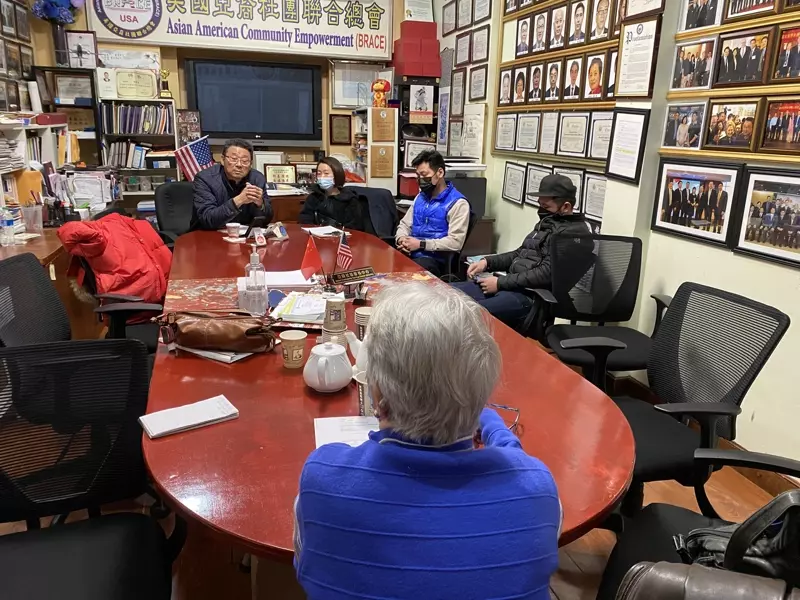
布碌仑(布鲁克林)近日有数名华人因买房或其他之需而通过中间人兑换银行本票(Cashier’s Check),不料却遭遇跳票,其中仅通过同一个中间人兑换的银行本票就有51万元被跳票。
数名受害者日前到美国亚裔社团联合总会求助,据陈氏夫妇讲述,因要购置房产,所有通过朋友介绍认识了以现金兑换银行本票的中间人张某,在将5万元现金交给对方后,于11月24日拿到本票,但因第二天是感恩节,他们在26日才前往银行,但不料再查帐户时发现跳票。
受害者石先生表示,他也是通过中间人张先生兑换了近2万元本票,然后在感恩节前后通过银行的ATM机存入,随后也遭跳票。
中间人张先生也场,他表示,自己至多从中赚取一个百分点,此次他是通过一名居住在新泽西州李堡(Fort Lee)的一华裔男子去当地银行兑换的本票。
张先生说,为保险起见,他还专门安排了一名司机带着45万元现金亲至李堡的银行,当面看着那名华裔男子将钱兑成本票并清点清楚后,才带着本票回到布碌仑。
据张先生称,在跳票后的第二天他即请律师前往银行查问,被告知那名男子随后又持身分证件回到银行要求撤销本票,导致这些本票跳票。
律师斯科拉里(Lisa Scolari)对此表示,受害者被骗后应第一时间向警方报案,另外因这些本票是跨州兑换,该案已涉及违反联邦法律,受害者还应尽快向联邦调查局(FBI)等部门举报。
斯科拉里还表示,若这些本票为真,银行不可能停止支付,因每张本票是由银行担保、以银行自有资金开具并由出纳员签署;因此不存在购买者第二天持证件又返回要求银行撤销的现象,除非这些本票为假才会跳票。
亚总会会长陈善庄表示,该案受害者至少有十几名,有的个人损失高达11万元,共计金额已经超过了50万元;但至今部分受害者选择不报警,怕税务局查税;但骗徒正是利用了这一点,他呼吁更多受害者站出来,配合调查。
藉耶稣基督之名圈钱 德州诈骗客被判关到死
世界新闻网
11/04/2021
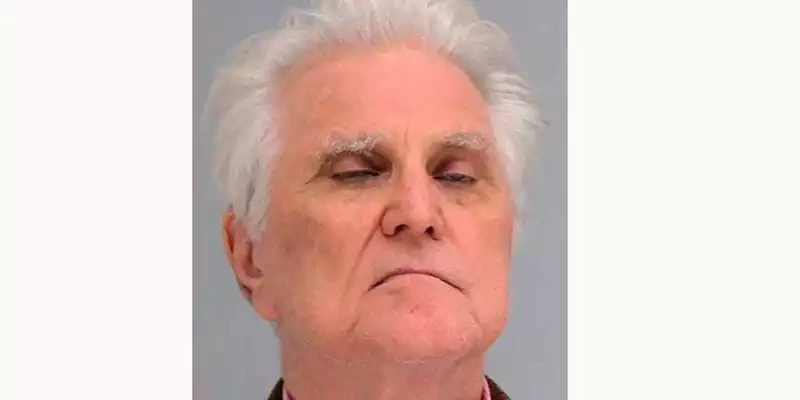
北德州一名基督教广播电台节目主持人,经营庞氏骗局(Ponzi scheme)大约十年后露馅,他于1日(周一)被法官判处第三个终身监禁。
现年80岁的威廉嘉勒格(William Gallagher),其实从2019年3月被捕后一直都待在监牢中,他因为同样的诈欺行为已被达拉斯法院判处25年徒刑,德州法院也已判了他30年。2019年8月,泰伦特县(Tarrant County) 法院对他提诉,这次的审判庭是为福和市一带的受害者讨回公道。
嘉勒格在一家基督教广播电台担任主持人,他每次节目收尾时,总说「星期天教堂见」(See you in church on Sunday),这成了听众百听不厌的口头禅,他还出版理财的书籍,譬如有一本名叫「耶稣基督,金钱大师」(Jesus Christ, Money Master)。他所成立的嘉勒格财务集团(Gallagher Financial Group)在电视台做广告,有许多年长者相信他是虔诚的基督徒,绝对不会骗他们的钱。
泰伦特县检察官办公室年长者财务诈欺小组(Elder Financial Fraud team)的组长萝莉瓦内尔(Lori Varnell)指出,这是她执法多年来所看到的最恶劣案例,嘉勒格在各教会的周日集会中与教友接触,这些已退休人士把钱交给他投资,少的有几万元,多的有60万元,最后却血本无归,有些人必须卖房,有的人跟子女讨钱过生活,有些人重回职场上班赚钱,他们损失的金钱总数达3200万元。
1920年代,查尔斯庞济(Charles Ponzi)在波士顿为他的投资公司做广告,宣称有丰厚的报酬率又没有风险,他把新投资人的钱拿来付老投资人的年度利息,经过几年名声越来越大,收到的资金越来越多,但庞氏骗局终究有爆发的一日,投资人失去资本,诈骗者入狱服刑,这种骗术如今就是以他为名。
Zelle scammers bilk bank customers out of thousands — how to avoid them
By Paul Wagenseil
9/03/2021
Scams involving Zelle payment service still happening
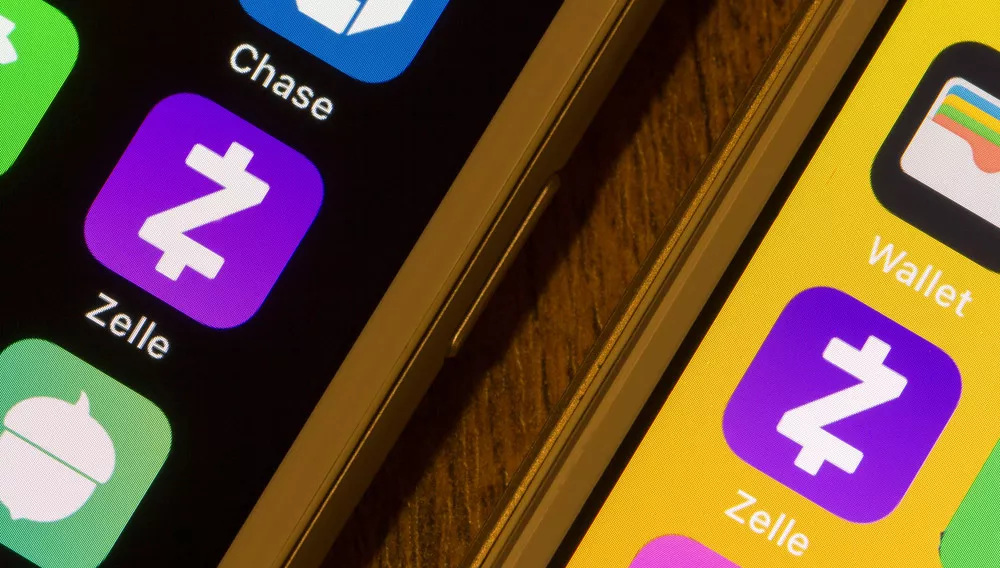
Two Chicago-area women say scammers bilked them out of $3,500 each by conning them over the phone and then using the Zelle mobile-payment system to withdraw money from their Bank of America accounts.
“It’s really distressing,” one of the women, Nausheen Brooks, told TV station WLS. “You save your hard-earned money to just be taken away from you.”
The scammers texted Brooks and the other woman, Darlene Chelsey, pretending to be Bank of America and asking them to verify purchases. Both women denied making the purchases in question, and then were called by persons claiming to be bank representatives. The scammers used what appeared to be legitimate Bank of America phone numbers.
The women were each told that there had been Zelle withdrawals from their accounts, but that the problems could quickly be fixed if they used their own mobile banking apps to transfer the money back to themselves.
Six Spaces Home Staging

Contact: Hongliang Zhang
Tel: 571-474-8885
Email: zhl19740122@gmail.com
Brooks and Chelsey both did so, and the money disappeared. It seems that both their Zelle accounts had already been taken over by the scammers.
“They definitely had access to the account if the money was wired to herself,” Bogdan Bodezatu, a threat researcher with Bitdefender, told WLS. He added that the scammers may have gotten access to the accounts due to data breaches at other websites, which can compromise reused passwords.
How to avoid Zelle scams
Avoiding Zelle scams is like avoiding many other online scams. Create strong, unique passwords for any account that involves money, especially banking accounts, and use one of the best password managers to keep all of them straight.
Don’t trust anyone who calls or texts you and wants you to perform a financial transaction, even if that person appears to be from your bank. Instead, call the bank yourself using a number that you look up.
Don’t give out one-time-use verification codes to anyone, even if they claim to be from your bank. And again, never reuse passwords for sensitive accounts.
Years of Zelle scams
Sadly, this is not a new occurrence. Zelle-based scams have been happening for years — we first wrote about them in April 2018.
The earliest scams involved crooks getting people to pay for non-existent items through Zelle, then discovering they couldn’t get their money back because unlike with a credit-card, the money is withdrawn immediately from your bank account.
Later, people who’d never even signed up for Zelle were scammed out of thousands of dollars by crooks who set up accounts in their names and drained their bank accounts.
That’s because Zelle is owned by seven of the largest U.S. banks, including Bank of America, and used by hundreds more banks. Anyone who has an account with those banks is eligible for a Zelle account, and many banks build Zelle right into their own mobile apps.
These most recent scams seem to involve persons whose accounts have already been hijacked, perhaps through password reuse. (If you use a password on more than one account, then a compromise of any one of those accounts compromises them all.)
Why Zelle is vulnerable
The real problem is that Zelle uses email addresses and phone numbers to identify account holders, and neither was ever designed to be foolproof. Both email addresses and phone numbers can be easily “spoofed” by cheap software.
Many banks do text a one-time code to customers to verify certain transactions, yet not only can text messages be intercepted, but scammers can con customers into revealing texted codes.
Another issue is that Zelle has direct access to bank accounts. Venmo, which is not affiliated with the banks, makes users create a separate account that is linked to a credit card or into which the users deposit money. This creates a buffer between Venmo transactions and their bank accounts.
We’ve reached out to Zelle to ask if the company has made any security improvements in the past three years, and whether Zelle would consider setting up a “staging” account to act as a buffer, similar to the way Venmo operates. We’ll update this story when we receive a response.
In the meantime, one thing does appear to have changed: Both Brooks and Chelsey had their $3,500 losses covered by Bank of America. That’s a better outcome than some of the earliest Zelle scam stories, in which the victims were essentially told by the banks that they should have read the fine print.
That fine print, by the way, still says that the bank isn’t legally liable if you transfer money via Zelle to the wrong people.
Update: Zelle responds
In response to our inquiries, Zelle provided this statement.
“Phishing Scam: This is an example of a phishing scam where the scammer spoofed the Bank of America phone number and attempted to convince the individual to provide their personal information, not a breach of Bank of America or Zelle security.
We’d like to remind consumers that your bank will never call you to ask for sensitive information and they would not ask a customer to transfer funds between accounts in order to prevent fraud. Hang up and call your bank at the phone number listed on the back of your bank-issued debit card or on the bank’s official website if you must provide information over the phone.
In-App Notifications: When consumers send money using Zelle within their mobile or online banking experience, they are sending money directly from their bank account to another person’s bank account, typically within minutes when both users are already enrolled.
When sending money there is a final prompt requiring the sender to confirm the mobile number or email address being used and that it belongs to the intended recipient. This prompt provides the first name of the person who the mobile number or email is enrolled to and an alert that the payment cannot be cancelled once sent.
Consumer education: Zelle is working to address an acute need for financial education. Through our Pay It Safe initiatives, we have partnered with organizations to offer free financial education to consumers through modern banking courses and consumer protection resources.
Through a strategic partnership with EVERFI — the leading social impact education technology company — we have reached more than 60k students in 47 states. Results show that high school students achieved a 39% average knowledge gain after taking the Zelle Money Moves: Modern Banking & Identity Protection course.
In addition, we are working with Cybercrime Support Network to spread awareness and educate consumers and small businesses on avoiding financial fraud and scams.”


北美法律公益讲座安排
时间:周二到周五 晚间
5:30-7:00(西部时间)8:30-9:30(东部时间)
周二:如何准备遗嘱材料(遗嘱workshop)
周三:数据泄露和个人身份保护&事业机会说明会
周四:家庭法和婚姻法(周律师)
周五:人身伤害和索赔(朱律师)
Zoom:6045004698,密码:请私信或群里@我
另外:周三6:30(西部时间)
专题:99%华人移民不知道的法律问题(粤语专场)
Zoom 95190929213,密码:私信或群里@我





